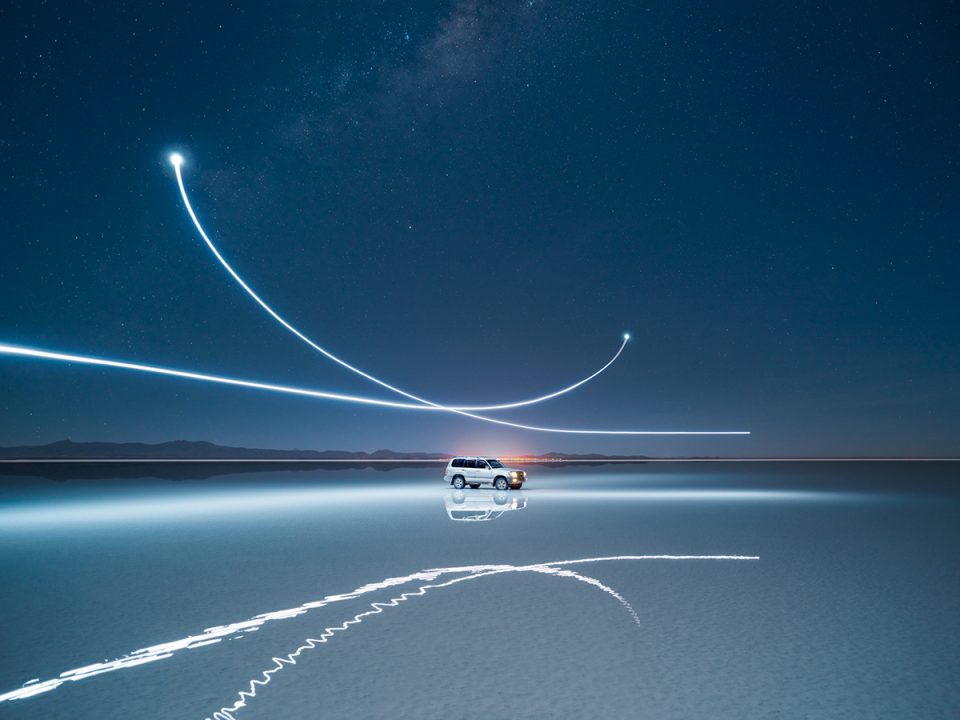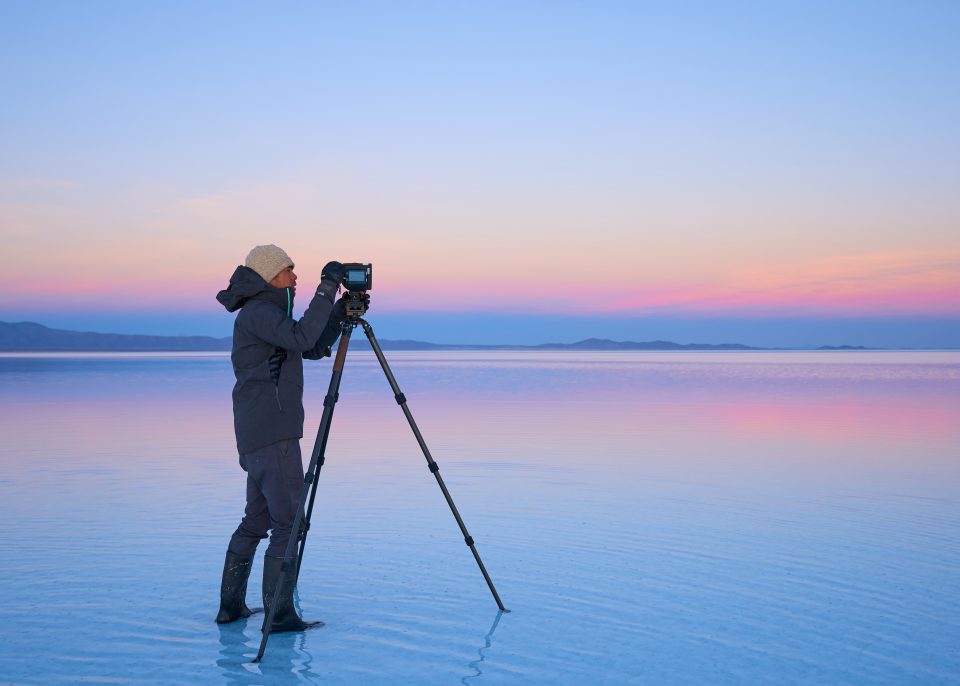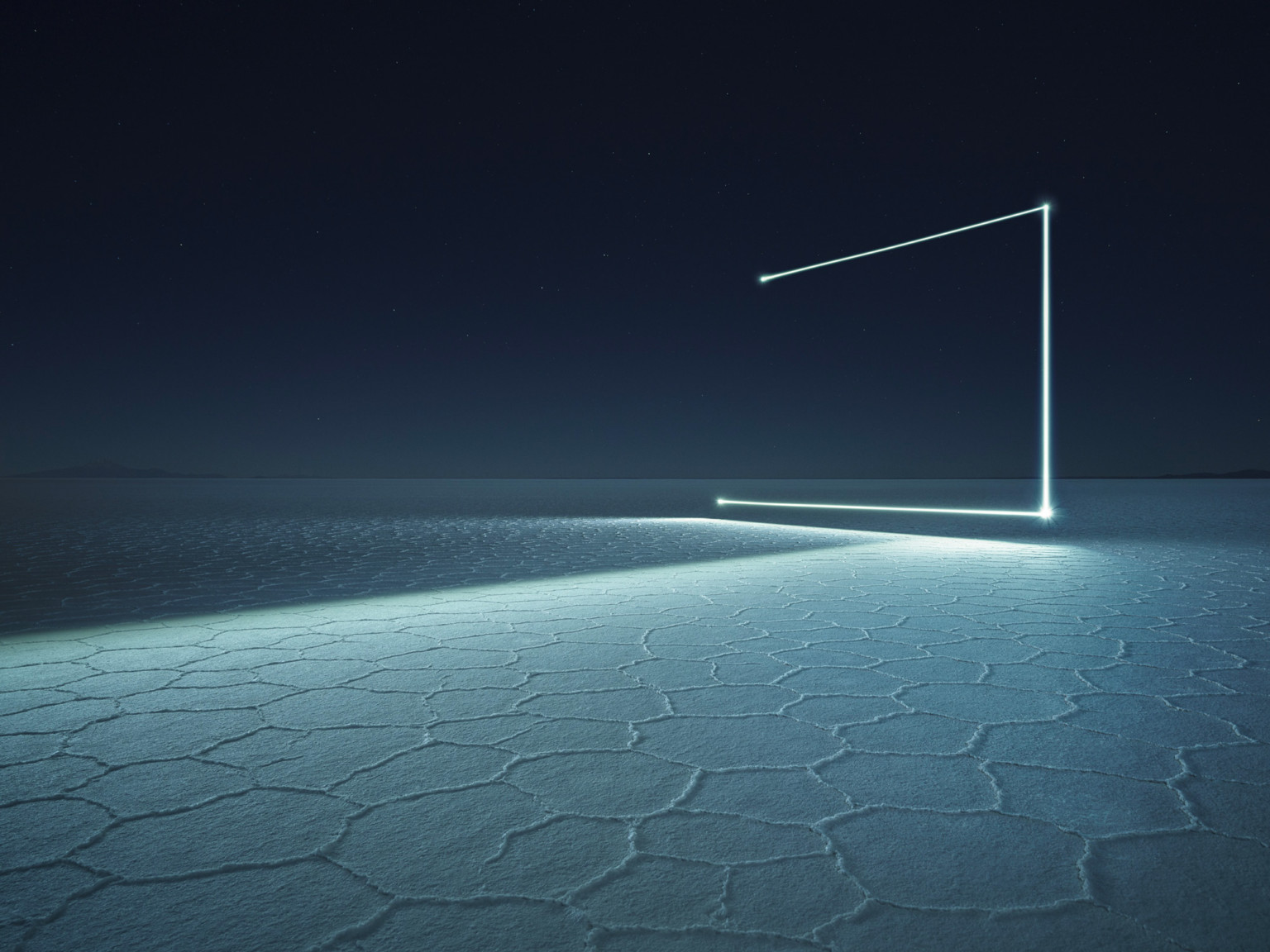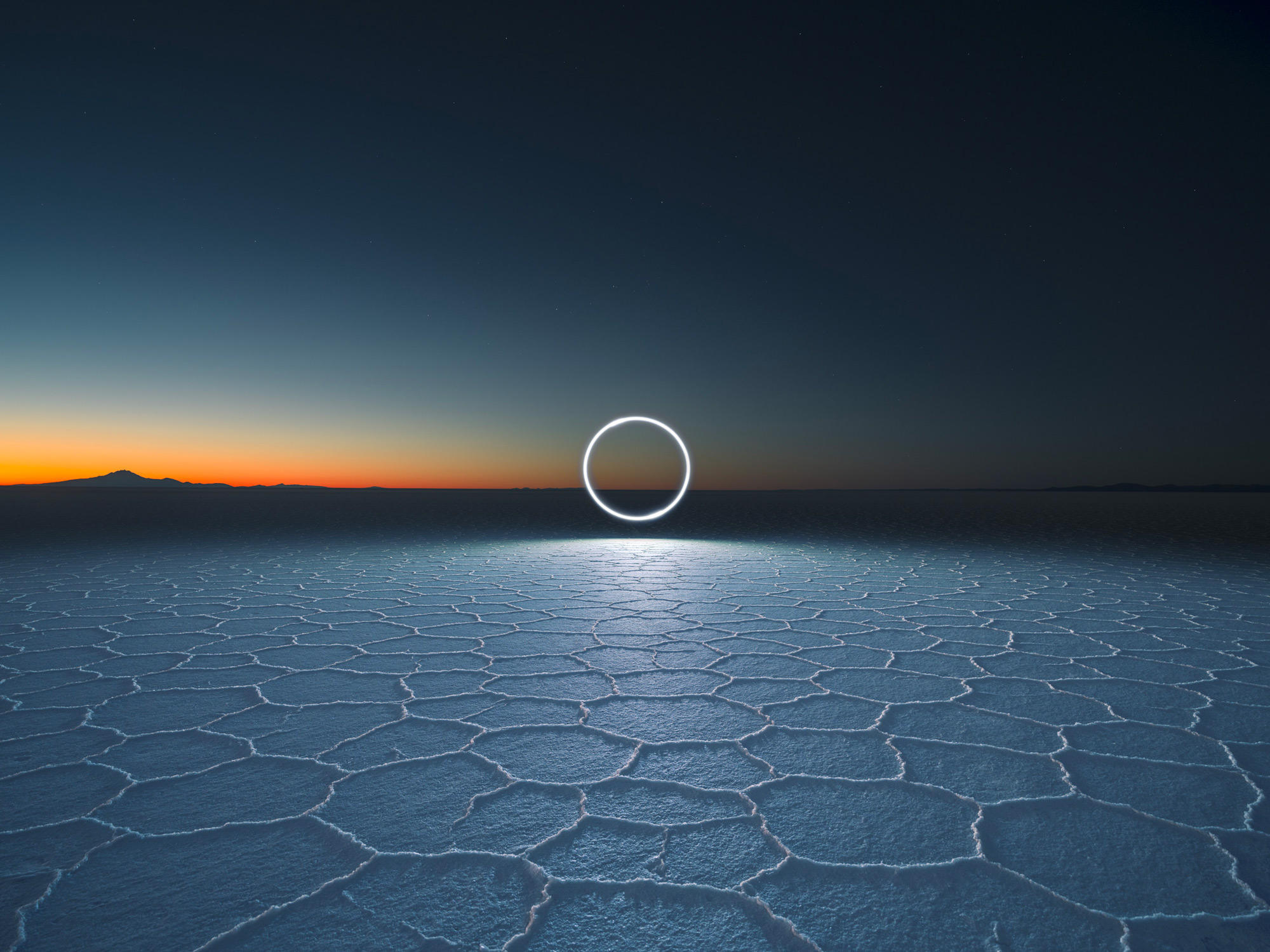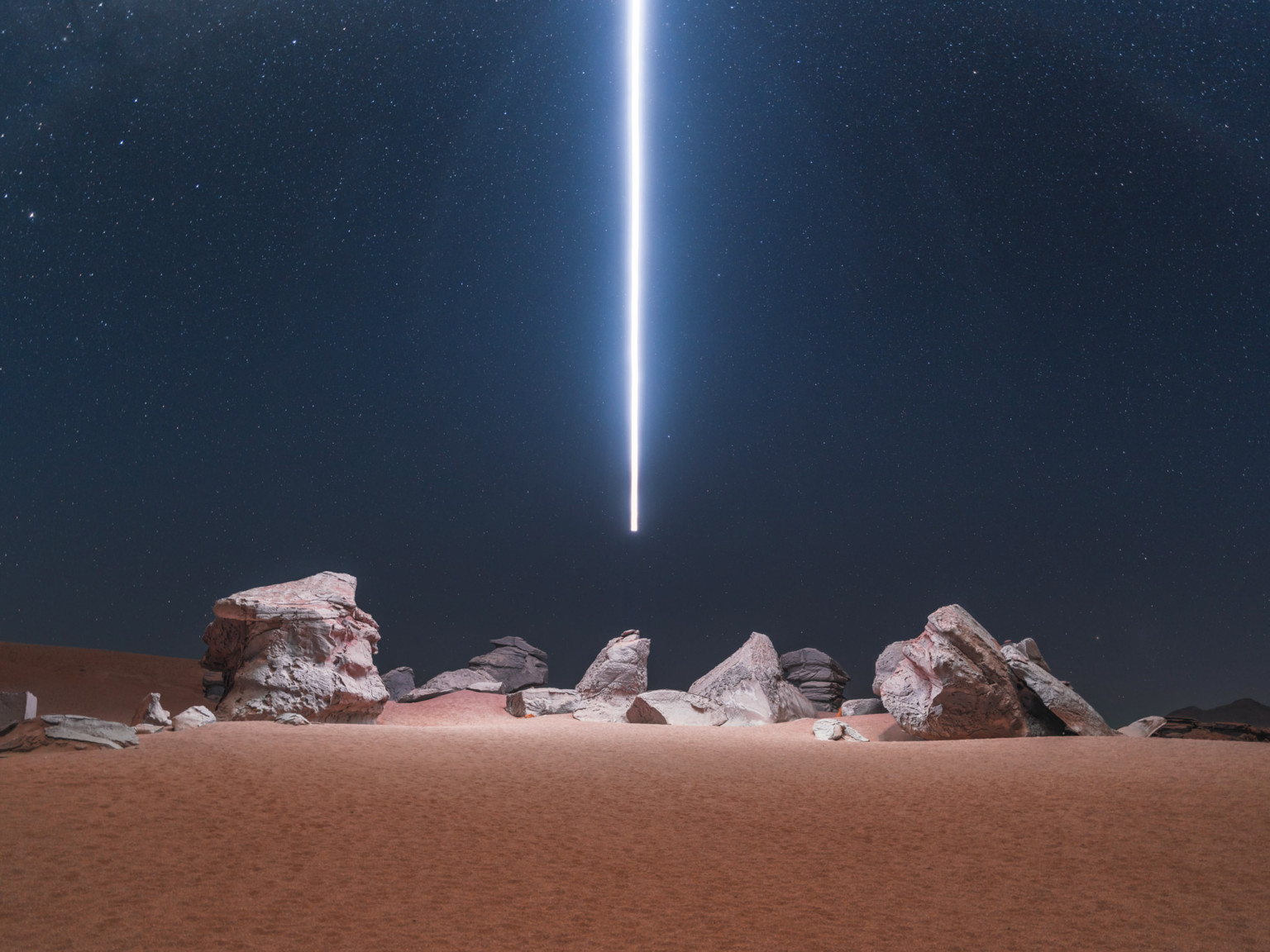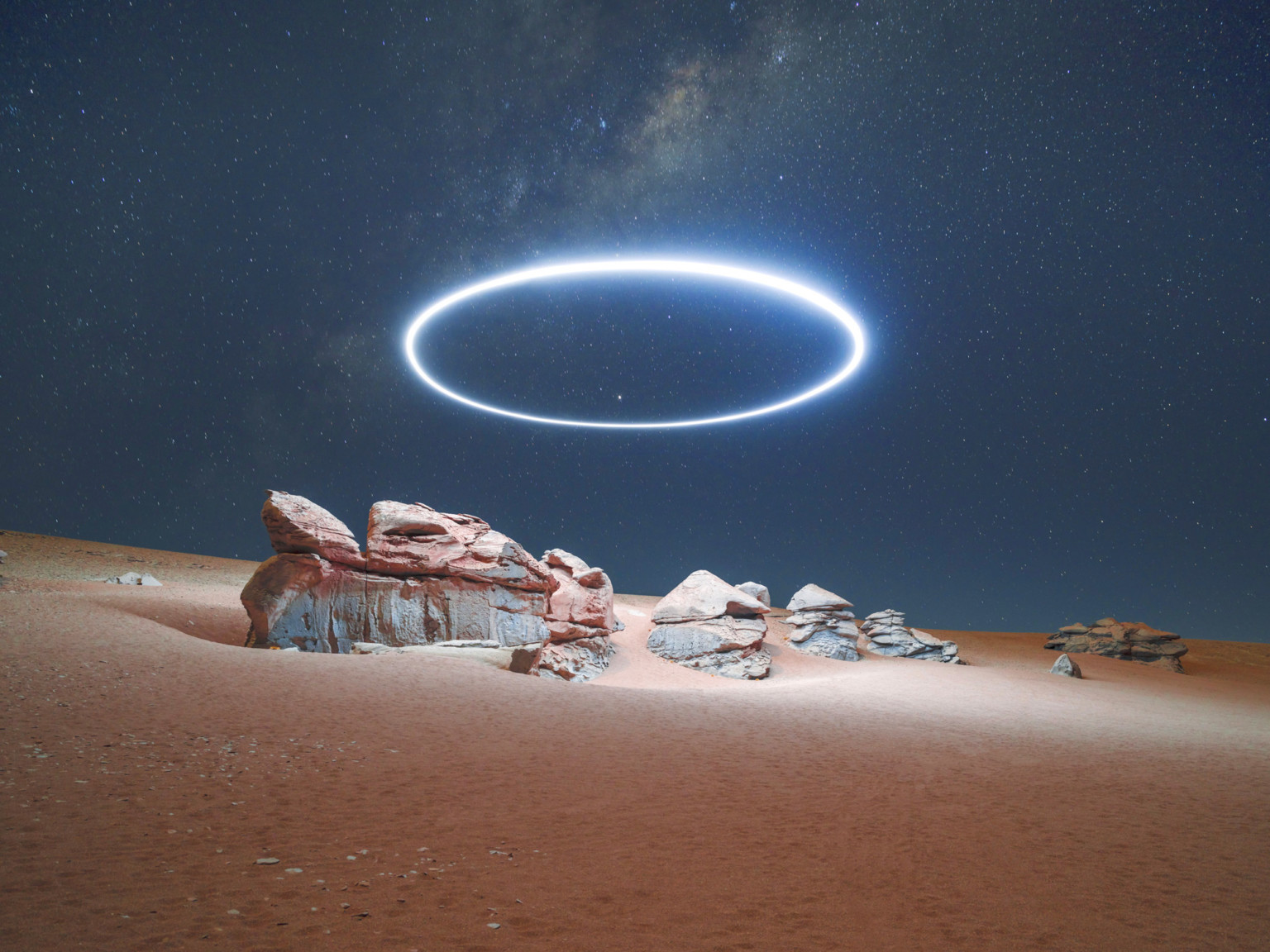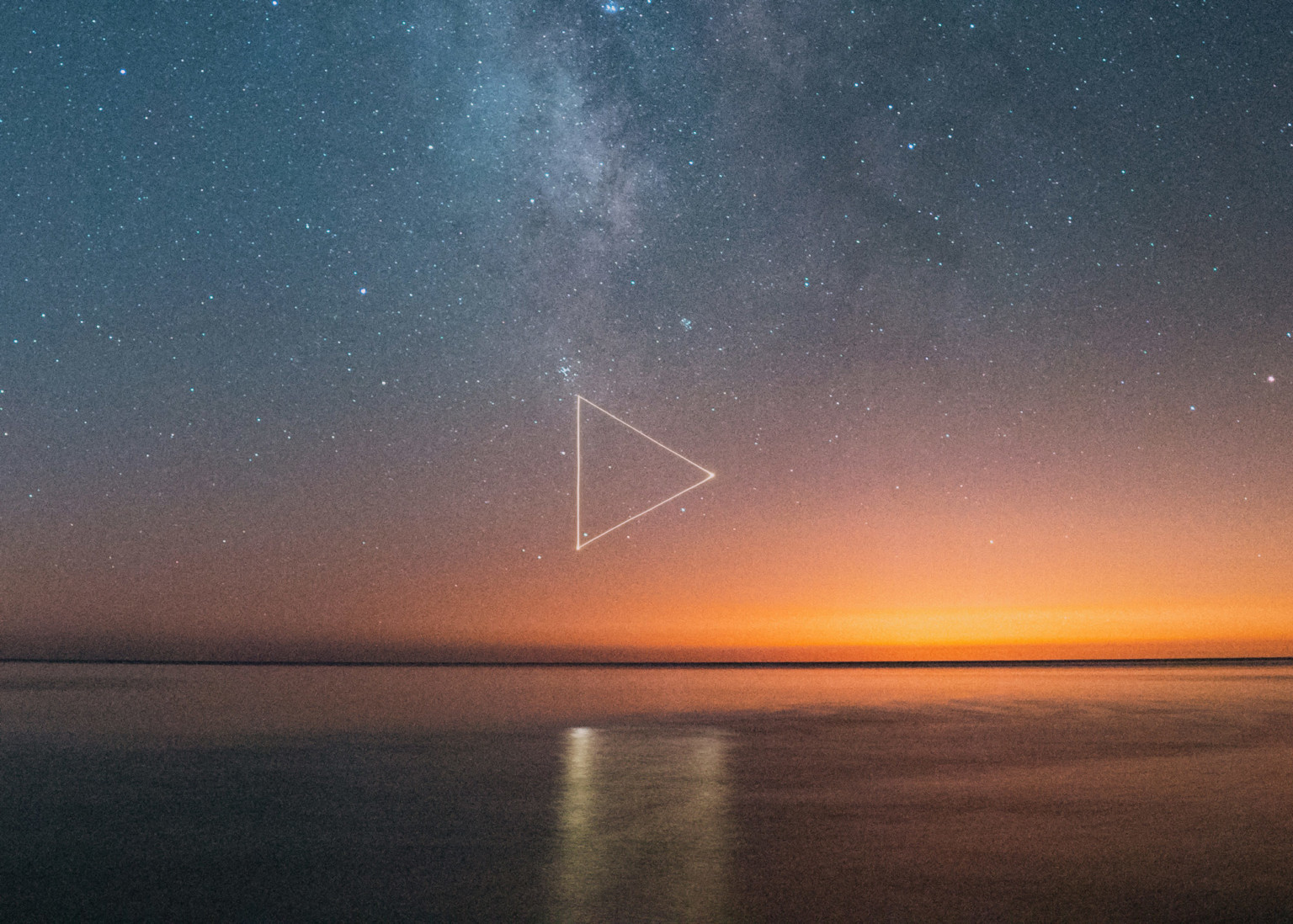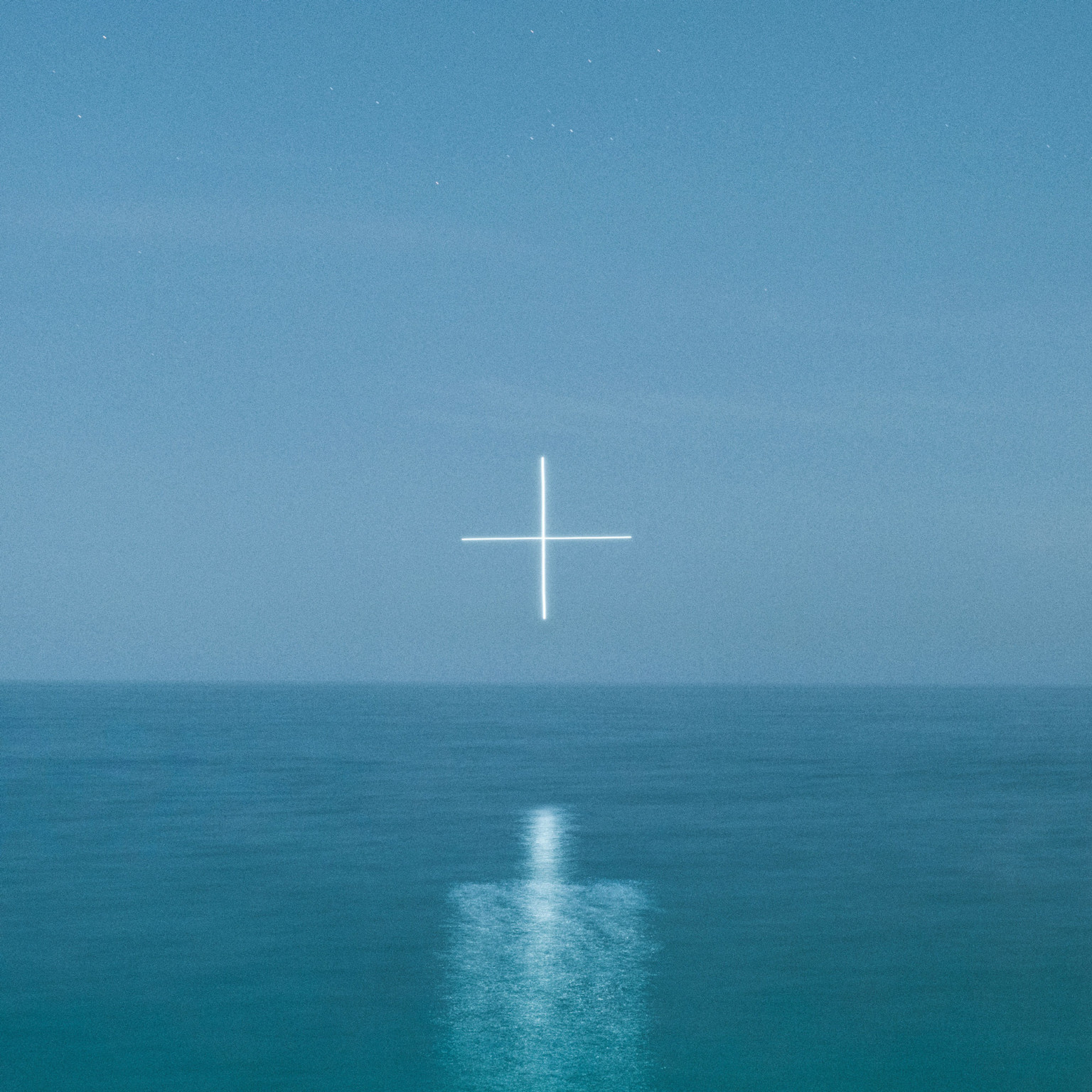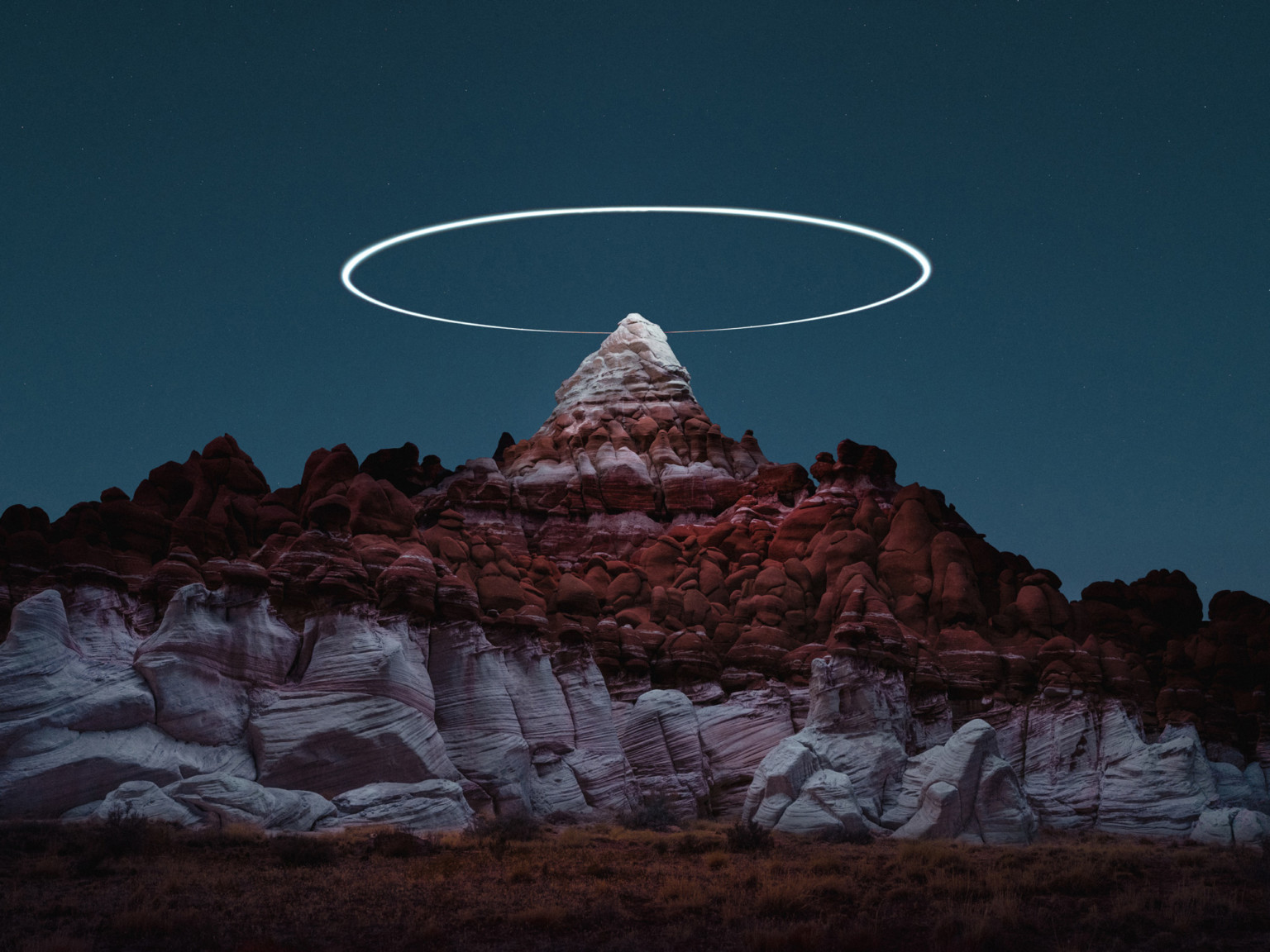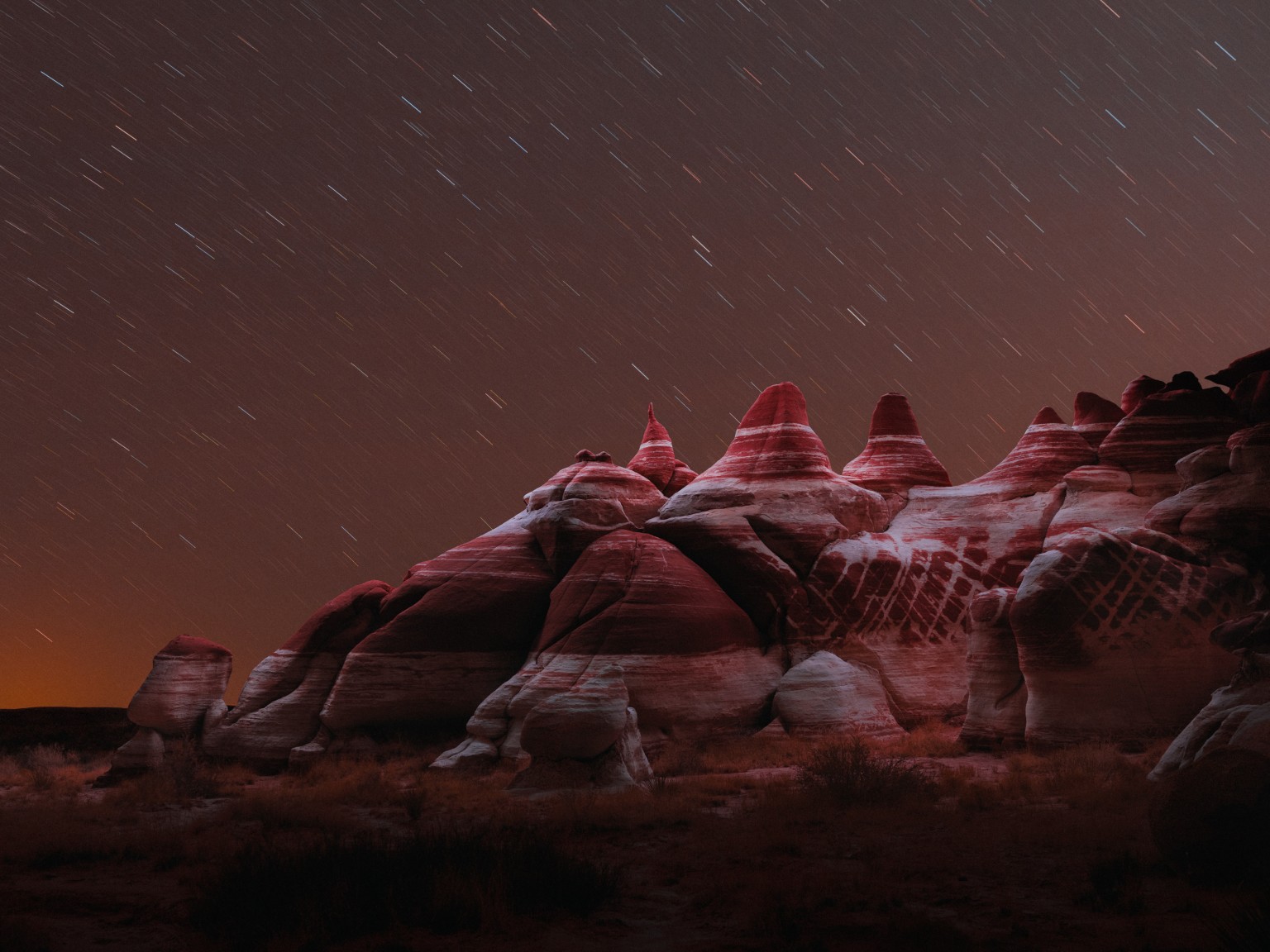Photographer Reuben Wu continues his stunning “Lux Noctis” series with a new collection of images capturing illuminated drone paths over Bolivia’s eerie salt flat landscape. This time, he got to use some cool new equipment: Phase One’s 150-megapixel XT camera system, which costs $57,000.
Phase One sponsored the project, sending Wu to the extraordinary landscape for a set of photos that look more alien than ever.
“My favorite memory from the trip to Bolivia is shooting the salt flats at sunset. The salt crystallizes into beautiful polygon shapes stretching into the horizon and, as the sun was setting, the shadows cast by the glowing salt ridges became longer and longer, and so the landscape would look different every few seconds. Being there and watching the landscape change as the sunset moved across it, that feeling just stuck with me.”
“A lot of my photos created with drone lights feature circles. To me, this shape represents renewal and perfection. With the image above, I wanted to feature the circle within the landscape of Bolivia’s salt flats. Having the light really low on the salt flats created an interesting mood, with the glow emanating from it and the shadows cast on the ground.”
Another series, Aeroglyphs, takes a more geometric approach with large shapes traced in the sky, contrasting with ethereal settings.
Previously, we covered the UFO-style patterns in the skies Wu created for LUX NOCTIS II. The photographer (who’s also a founding member of the band Ladytron) has traveled the world seeking out the most dramatic, high impact landscapes he could find and flying LED-equipped drones overhead to illuminate them after dark.
“It’s so easy to become numb to conventional depictions of beautiful nature,” he said at the time. “In casting a new, unfamiliar light, I want people to see that while other planets are fascinating and incredible to us through the eyes of spacecraft and rovers, it is our own planet which has so much grandeur and beauty which is both accessible to us and worthy of preservation and protection.”
You can read more about Wu’s work in Bolivia at the Phase One website.
